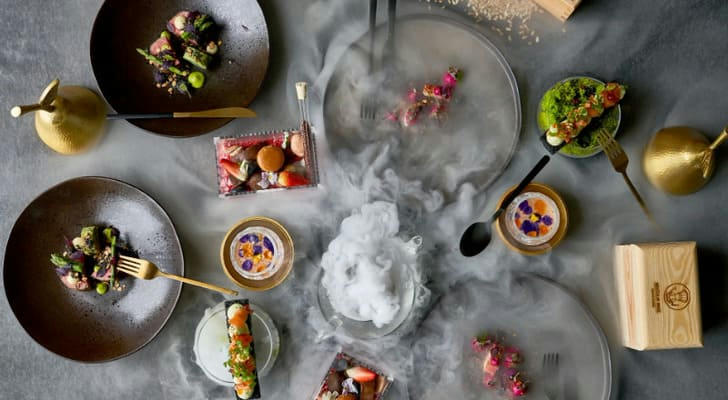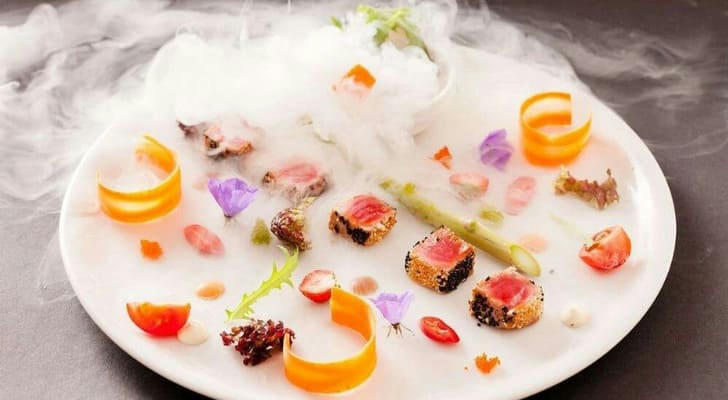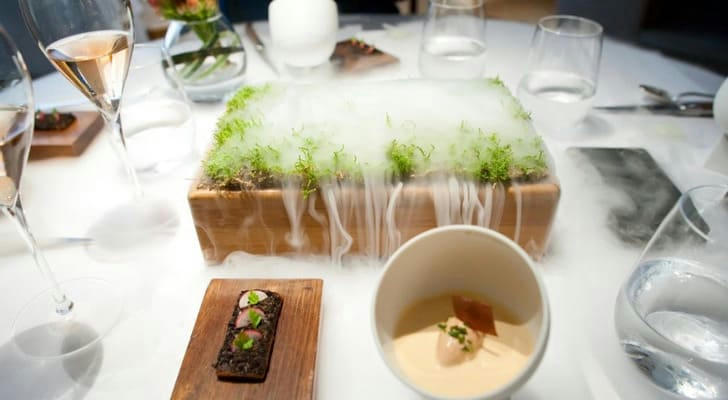Certified Mastery in Molecular Gastronomy: Elevate Your Culinary Career with Global Accreditation

Molecular gastronomy has evolved from a niche scientific curiosity to a cornerstone of modern culinary innovation. By leveraging principles from physics, chemistry, and biology, this discipline transforms ingredients into multisensory experiences—think liquid nitrogen-frozen desserts that vanish on the tongue or fruit juices encapsulated as edible "caviar." With the global molecular gastronomy market projected to grow at 8.2% CAGR (2025–2030), professionals seeking to lead this revolution increasingly rely on globally accredited certifications to validate their expertise and access elite opportunities.
This article explores the rigorous training frameworks, industry-aligned accreditation, and expansive career pathways that define molecular gastronomy’s future, supported by data-driven insights and real-world applications.
Core Curriculum: Bridging Science and Culinary Art
Certification programs, such as those offered by the Spanish Molecular Gastronomy Research Center (SMGRC) and Le Cordon Bleu, emphasize mastery of transformative techniques through modular learning:
1. Spherification & Encapsulation
Direct/Reverse Spherification: Using sodium alginate and calcium chloride reactions to create liquid-filled spheres (e.g., balsamic pearls, mango "egg yolks").
Alcohol Stabilization: Encapsulating acidic or alcoholic liquids (e.g., tequila "caviar") for cocktail innovations.
Industrial Applications: Over 72% of luxury hotels now use spherified elements to enhance cocktail menus and tasting plates.
2. Precision Cooking & Cryogenics
Sous-Vide Mastery: Temperature-controlled immersion circulators ensure proteins retain moisture (e.g., 72-hour slow-cooked beef with 5% moisture loss vs. 15–20% in traditional methods).
Liquid Nitrogen (-196°C): Instant freezing for ultra-smooth ice creams and theatrical plating effects (e.g., nitro-frozen herbs for aromatic smoke).

3. Texture Engineering
Hydrocolloid Gels: Agar-agar and carrageenan craft transparent ravioli ("crystal dumplings") or edible films for zero-waste plating.
Soy Lecithin Foams: Lightweight textures (e.g., espresso air, carrot mousse) enhance sensory contrast in dishes served at 60% of Michelin-starred venues.
Programs like SMGRC’s 3-day intensive course validate proficiency through live assessments, including multi-course molecular menu design under HACCP protocols.
Global Accreditation: Ensuring Safety and Innovation
Certification bodies align with rigorous international standards to address both creativity and compliance:
1. SMGRC (Spain)
WACS Accreditation: Focuses on allergen management and sustainability practices (e.g., lab-grown hydrocolloids, zero-waste plating).
Market Impact: Trained over 20,000 professionals globally, with alumni leading R&D at venues like The Fat Duck and Alinea.
2. Le Cordon Bleu’s "Innovative Techniques" Diploma
ISO 22000 & BRCGS Compliance: Critical for facilities handling high-risk ingredients (e.g., raw seafood, fermented meats).
Cross-Industry Collaboration: Partners with biotech firms to explore 3D-printed foods and edible packaging solutions.
3. Emerging Players
- Chinese Agricultural University (CAU): Combines molecular theory with lab practice (e.g., gelation of fruit juices, low-temperature emulsification).
Career Pathways: From Kitchens to Biotech Labs
Certified professionals dominate high-impact roles across industries:
1. Fine Dining Leadership
Michelin-Starred Innovation: Restaurants like Alinea (USA) and The Fat Duck (UK) prioritize chefs skilled in molecular techniques for avant-garde menus.
Data Insight: Over 60% of Michelin-starred restaurants in Europe and Asia integrate molecular elements to differentiate offerings.

2. Food Technology Development
Plant-Based Textures: Collaborate with brands like Nestlé to create meat alternatives using gelation and encapsulation.
Encapsulated Flavors: Develop shelf-stable desserts or beverages for mass production, projected to capture $126 billion in market value by 2027.
3. Hospitality Education & Consultancy
Workshop Leadership: Train chefs at institutions like Institut Paul Bocuse or advise hotels on molecular-themed dining experiences.
Sustainability Advocacy: Promote zero-waste techniques (e.g., dehydrated vegetable powders) to reduce kitchen waste by 30–40%.
4. Cross-Industry Entrepreneurship
AI-Driven Culinary Tech: Partner with companies like Huawei to develop FoodGPT models for personalized nutrition solutions.
Edible Packaging: Innovate biodegradable films using hydrocolloids, targeting $148 billion in sustainable food tech by 2030.
Market Trends & Future Outlook
Experimental Convergence: AI-powered molecular cooking machines (e.g., Boss Group’s "God of Cuisine" model) are projected to achieve 80% CAGR in sales by 2027, targeting precision nutrition and space food production.
Cultural Adaptation: In China, molecular techniques fuse with regional cuisines (e.g., Sichuan pepper foam, tea-infused gels), driving a 12% annual growth in molecular-themed restaurants.
Experiential Dining: Luxury hotels invest in molecular techniques to boost guest retention, with 72% prioritizing certified chefs.
Conclusion
Molecular gastronomy certifications are more than credentials—they are catalysts for culinary reinvention. By mastering techniques like spherification and cryogenics, validated by SMGRC and WACS, professionals redefine gastronomy’s boundaries. Whether crafting Michelin-starred menus or pioneering sustainable food tech, global accreditation unlocks opportunities at the intersection of science, art, and commerce. In an era where AI-driven kitchens and 3D-printed foods are no longer futuristic fantasies, certified experts are the architects of gastronomy’s next chapter.
